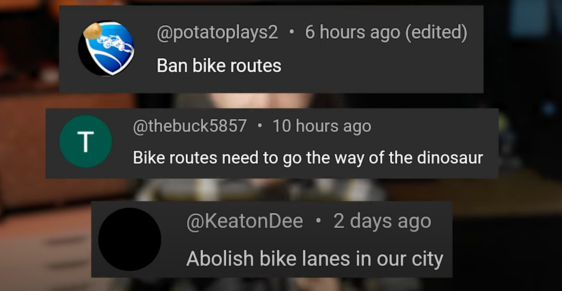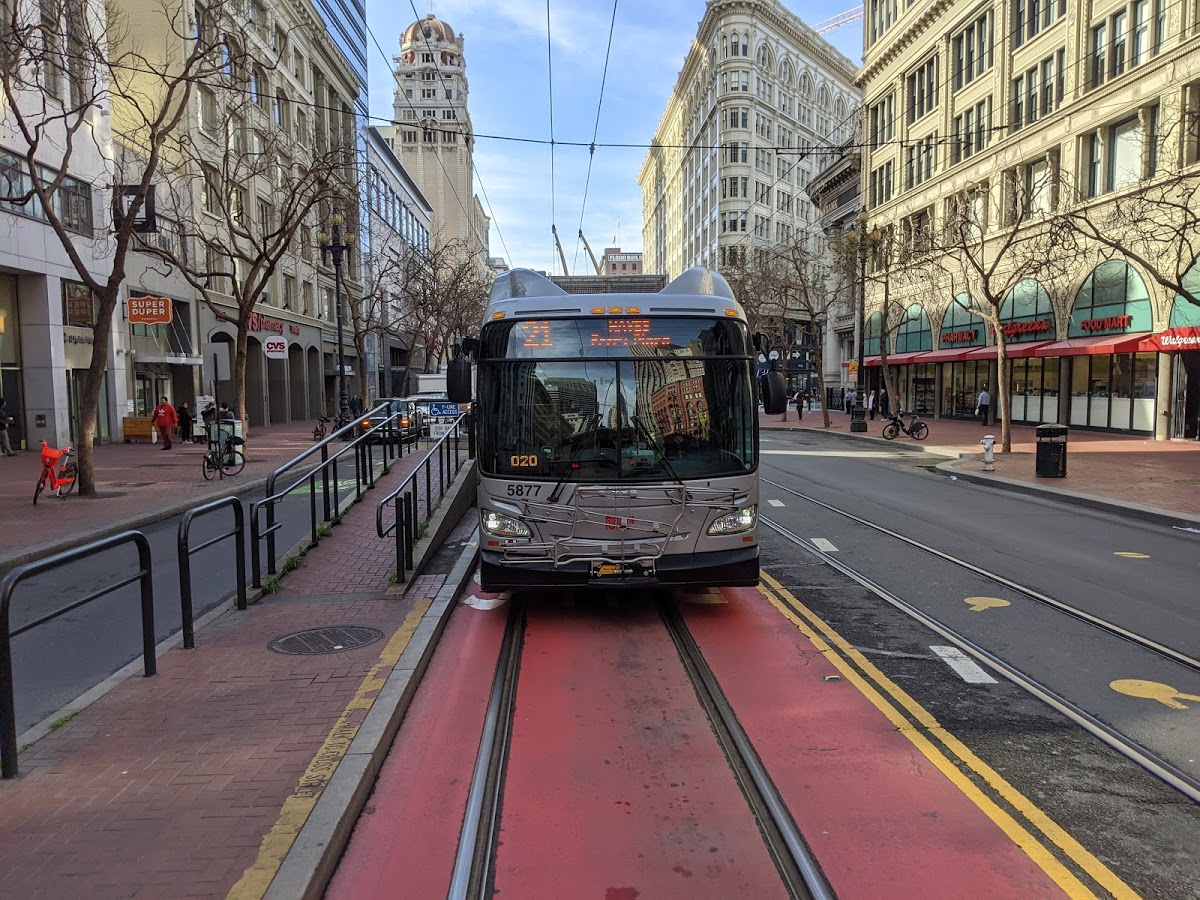Mayor Ed Lee has made it clear that he has no plans to take leadership on funding San Francisco's vision for making bicycling a mainstream mode of transportation.
During a question-and-answer session at yesterday's Board of Supervisors meeting, Supervisor Eric Mar asked the mayor how he will help fund the SFMTA's Draft Bicycle Strategy, a compass to guide the city toward its official goal of having 20 percent of trips by bike by 2020. Essentially, as the Bay Guardian put it, Mar's question "is simply asking the mayor whether he will put his money where his mouth is."
But in the mayor's tepid, convoluted answer (reprinted below), he never says that SF needs to invest more in bicycling.
In other words, Lee said "No." He's not going to put his money where his mouth is. All those feel-good statements about building 100 miles of protected bike lanes? Apparently, Lee has no intention of following through.
Instead of embracing calls to allocate a relatively modest sum to help put SF on par with cities like New York and Chicago -- which are getting safer streets and better economic outcomes out of their investments in bike infrastructure -- Lee asserted that the city is already doing enough to encourage bicycling.
According to the Bike Strategy, the "20 percent" vision would require an investment of $500 million in infrastructure like protected bike lanes -- which would still amount to less than 8 percent of the SFMTA's capital spending, according the SF Bicycle Coalition. With a smaller investment of $200 million -- the scenario deemed most realistic by the SFMTA -- the city could reach a bike mode share of 8 to 10 percent by 2018. Currently, the agency only has $30 million in funding secured for bicycle improvements during that time period.
To put the $500 million citywide network of safe bicycle infrastructure in perspective with other SF transportation projects, the 1.7-mile Central Subway costs $1.6 billion, the replacement of Doyle Drive with the Presidio Parkway costs roughly $1 billion, and BART's newly proposed expansion of Embarcadero and Montgomery Stations would cost an estimated $900 million. As Bikes Belong's Martha Roskowski noted during her San Francisco visit last week, "It’s a drop in the bucket of the ‘great big spending’ of the city. It’s really a question of priorities."
But in his statement, Mayor Lee failed to even acknowledge the need for increased investment in bicycling -- a turnaround from his occasional pro-bike rhetoric, and a huge disappointment to San Franciscans who took it to heart.
When Lee was first appointed as mayor, he told Streetsblog that he'd work to help realize the SFBC's Connecting the City vision for 100 miles of protected bikeways by 2020. "I'd like to get the whole city family together and see how we can make that work from the ground up," he said.
At a Bike to Work Day event on the steps of City Hall last year, Lee declared, "I want to see that 100 miles from the Bay to the ocean, north and south, painted by the year 2020 to see everybody ride the whole city and connect up either way using their bikes."
Lee should take a lesson from SFMTA Director Ed Reiskin -- his former colleague at the Department of Public Works -- who knows as well as any forward-looking transportation chief that "the most cost-effective investment we can make in moving people is in bicycle infrastructure."
Instead, Lee defended his efforts to improve city transportation, touting his recently-announced Transportation 2030 Task Force -- a working group of various stakeholders charged with developing solutions to increase transportation funding (it's unclear at this point who will sit on it) -- and put the onus on the SFMTA to present him with specific plans for bicycle improvements before he'd consider taking any action to help fund them.
Lee also used faulty logic in his argument disputing the numbers on the city's spending on bicycling -- an estimated 0.46 percent of the SFMTA's capital budget -- by citing street projects in the works that include other components in addition to bikeways, lumping in the costs of transit and other street improvements which generally cost far more than bike infrastructure.
Here's Lee's full prepared response to the Board of Supervisors:
I'd like to emphasize that the SFMTA's primary priority is to ensure that the streets are safe for all San Franciscans, especially for those that are on bicycles.
This weekend, as you described, I made my own bicycle trip on Central Market and through the South of Market neighborhoods, and trying to make sure I know firsthand the importance of bicycle safety and the use of bicycles in our city.
The SFMTA’s capital budget and the Capital Improvement Program represents a combination of all transportation modes in San Francisco, so just to look at a percentage of the whole might not tell the whole story. Most recently, the SFMTA applied for three major bicycle projects on Masonic Avenue, 2nd Street, and Mansell in McLaren Park with the San Francisco County Transportation Authority. These three projects alone total more than 31 million dollars in improvements including millions of dollars of investment in our bicycle network. I also understand that the Transbay Joint Powers Authority applied for another ten million dollars in funding, which includes the significant bicycle infrastructure for our city. These, put together, total more than forty million dollars in improvements many of which are bicycle related and will be before this body very soon. Additionally, the SFMTA is now projecting that their five-year bicycle funding will increase from 17 million dollars to 37 million dollars, so that’s an increase of about 118 percent.
As you noted, Supervisor Mar, the SFMTA has recently crafted the Draft Bicycle Strategy. And through this process we have initially identified the improvements that are required to make San Francisco a world-class cycling city and have continued to work through the Capital Planning Committee process to allocate resources for infrastructure projects identified in the strategy.
Lastly and most significantly, I announced at my state of the city address last month that along with Board President Chiu, we will convene a San Francisco Transportation 2030 Task Force jointly chaired by Gabe Metcalf at SPUR and our Controller’s Office. And this task force will invite representatives from all of our regional transportation agencies, our key stakeholder groups and community groups, and our technology committee to the table to make important decisions the San Francisco way through consensus building on all of our transportation challenges.
This task force just isn’t about providing solutions for many, although that is an important part of the charge. Though, report back to me, to President Chiu, to the SFMTA Chair of the Board Tom Nolan, with a coordinated set of priorities and actual recommendations to enhance the entire transportation network, and bicycling will be an important piece of this network. So in some ways, the Bicycle Strategy will be used as an important guide to clearly define our priorities for future needed improvements. And also, Supervisor Mar, you and your colleagues will receive those recommendations from the task force and I will forward a working review on all of you for funding of this project.





